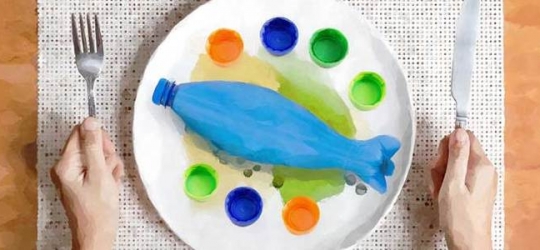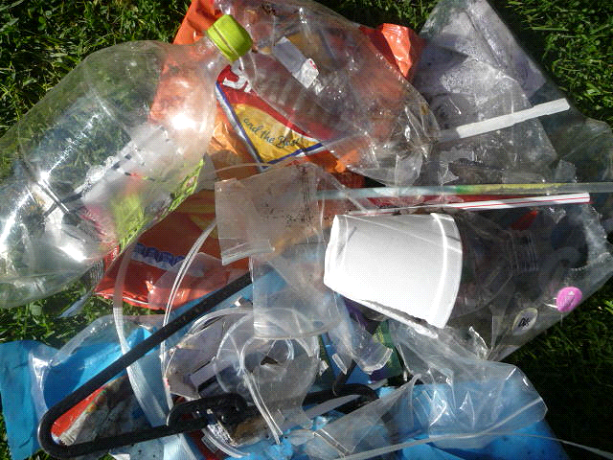
Microplastics: small plastics, big problem
Posted on June 17, 2018 by DrRossH in Plastic Limiting Regulations, Plastic Waste News
Almost everything we own and buy contains plastics. Look around. If it’s not the chair you’re sitting on, or that part of a pen in your drawer, that bottle in your…
Source: Microplastics: small plastics, big problem
Now, here’s where it gets scarier… While the studies about the effects of microplastics are still at a relatively early stage, initial researches published by UNEP and in the Proceedings of the National Academy of Sciences (PNAS) have discovered that eating plastic particles may cause reduced activity rates, reproductive disruption, weakened schooling behaviour, and altered feeding behaviour among sea creatures. How does this affect humans?
According to the One Health approach, the health of all living things (humans, animals and plants) and everything that surrounds us are interconnected. If something is wrong with the animals and plants around us, then something is likely to go wrong with us, unless we do something about it.
“Microplastic may not only affect species at the organism level; they may also have the capacity to modify population structure with potential impacts on ecosystem dynamics, including bacteria and viruses. Negative effects on the photosynthesis of primary producers and on the growth of secondary producers, potentially result in a reduced productivity of the whole ecosystem and represent a primary concern,” according to a report by the joint Group of Experts on the Scientific Aspects of Marine Environmental Protection (GESAMP).
“Our understanding of the fate and toxicity of microplastics in humans constitutes a major knowledge gap that deserves special attention,” it adds.
So, if we ignore this issue now, it is probable that the ‘plastic soup’ will no longer be metaphorical in the next 20 or 50 years. It will be a reality ‒ and one at a scale we simply can’t ignore.
Approx half of microplastics come from single use disposable plastics used by consumers. This is the easiest plastic to stop. Small changes of habits are only required.

 How many people today grab a takeaway coffee cup from the local cafe to drink on the go? We don’t know, but the number must be enormous.. Most every one of the above have a plastic top that will last 100s of years. Some cafes still use plastic cups that last a similar time. Is 10 minutes of coffee worth 100s of years of trash?
These items can be seen littering our gutters and on our streets all over the place. If they were all cardboard, they would still be littered, but they would, at least, be gone in a short time.
They do not need to be made of plastic.
How many people today grab a takeaway coffee cup from the local cafe to drink on the go? We don’t know, but the number must be enormous.. Most every one of the above have a plastic top that will last 100s of years. Some cafes still use plastic cups that last a similar time. Is 10 minutes of coffee worth 100s of years of trash?
These items can be seen littering our gutters and on our streets all over the place. If they were all cardboard, they would still be littered, but they would, at least, be gone in a short time.
They do not need to be made of plastic.
 On the way home from the gym last week, a distance of about 1 km (1/2 mile), I counted the items of plastic litter on the curb as I walked. In that short distance I counted 63 pieces of plastic litter. Plastic drink bottles, bottle tops, candy wrappers, plastic film, polystyrene fragments etc. That seemed to be a lot to me. I guess it is a generational thing. Our parents would have been horrified to see that amount, whereas it seems to go unnoticed by our youth of today. In another 20 years how many pieces will there be on this stretch, -- 200? What will today’s youth think of that new amount then when they are older? Will their children be so readily accepting of a higher amount of litter?
On the way home from the gym last week, a distance of about 1 km (1/2 mile), I counted the items of plastic litter on the curb as I walked. In that short distance I counted 63 pieces of plastic litter. Plastic drink bottles, bottle tops, candy wrappers, plastic film, polystyrene fragments etc. That seemed to be a lot to me. I guess it is a generational thing. Our parents would have been horrified to see that amount, whereas it seems to go unnoticed by our youth of today. In another 20 years how many pieces will there be on this stretch, -- 200? What will today’s youth think of that new amount then when they are older? Will their children be so readily accepting of a higher amount of litter?
Discussion · No Comments
There are no responses to "Microplastics: small plastics, big problem". Comments are closed for this post.Oops! Sorry, comments are closed at this time. Please try again later.